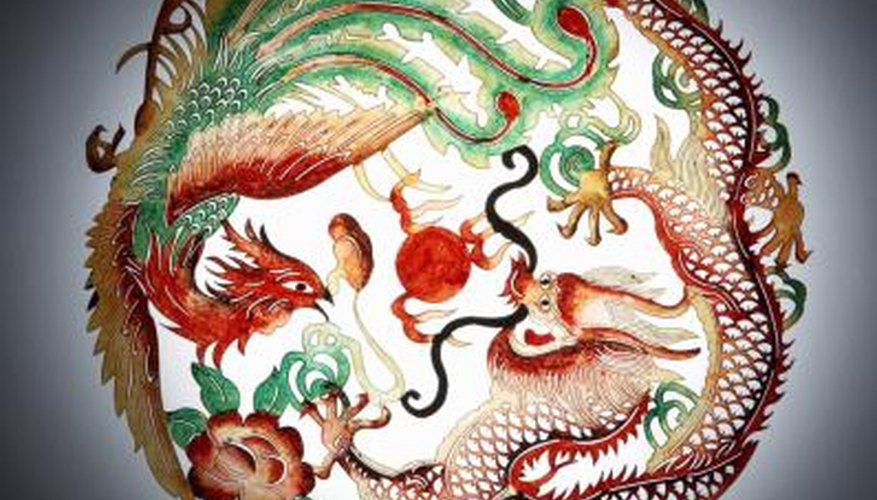The phoenix is a mythological sacred bird that has been adored for thousands of years as a symbol of various beliefs and principles such as good luck, immortality and prosperity. The phoenix and similar birds are found in various cultures around the world, including Egypt, Greece, Rome, China and India.
About Mythology
The word myth comes to us from "mythos," a Greek word for "story." It is often used to describe ideas that people believe are untrue, such as when they say, "It's a myth that carrots help your vision." However, myths aren't lies. They are more of a way of exploring religious or spiritual ideas such as the meaning of life, the creation of the world and the fear of death.
- The word myth comes to us from "mythos," a Greek word for "story."
- It is often used to describe ideas that people believe are untrue, such as when they say, "It's a myth that carrots help your vision."
The Western Phoenix Myth
The Western version of the phoenix story comes from Greek, Roman and Egyptian mythology.The Egyptian version describes the phoenix as a heron. In the Greek and Roman version, it resembles an eagle with gold and scarlet feathers. The story tells us that the phoenix lives between 500 and 1,461 years, and when it senses its death approaching, it builds a nest of sweet-smelling herbs and spices such as cinnamon and myrrh. When the nest is finished, the phoenix sets it on fire and dies in the flames. When the fire burns out, a new phoenix emerges from the ashes. Some versions of the story add that the new phoenix places the ashes in an egg made of myrrh, carries it to Heliopolis, an Egyptian city dedicated to the sun, and places it on an altar to Ra, god of the sun.
- The Western version of the phoenix story comes from Greek, Roman and Egyptian mythology.
- Some versions of the story add that the new phoenix places the ashes in an egg made of myrrh, carries it to Heliopolis, an Egyptian city dedicated to the sun, and places it on an altar to Ra, god of the sun.
The Story's Meaning
According to the "Macmillan Encyclopedia of Death and Dying," the cultures that created the phoenix myth saw the phoenix as a symbol of immortality, life after death and resurrection. Egyptians sometimes placed pictures of it on special coffins called sarcophagi that they buried their kings in. The Romans stamped images of the phoenix on their coins as a symbol of the undying Roman Empire. Early Christians considered the phoenix a symbol of death and resurrection.
- According to the "Macmillan Encyclopedia of Death and Dying," the cultures that created the phoenix myth saw the phoenix as a symbol of immortality, life after death and resurrection.
Similar Birds From Asia and India
The Chinese Feng Huang is described as having a head and comb like a pheasant but the tail of peacock. Feng Huang is considered a symbol of long life, good fortune, prosperity and the arrival of good government. Followers of the philosophy called Confucianism consider Feng Huang a symbol of honesty, loyalty, decorum and justice. Feng Huang was introduced to Japan in the 6th century under the name Houou. In Hinduism, Garuda is adored as the king of the birds. He is described as having the wings, head, talons and beak of an eagle but a body and limbs like a man. He symbolises ethics and the hatred of evildoers. The creator god Vishnu rides Garuda like a horse.
- The Chinese Feng Huang is described as having a head and comb like a pheasant but the tail of peacock.
- Followers of the philosophy called Confucianism consider Feng Huang a symbol of honesty, loyalty, decorum and justice.
